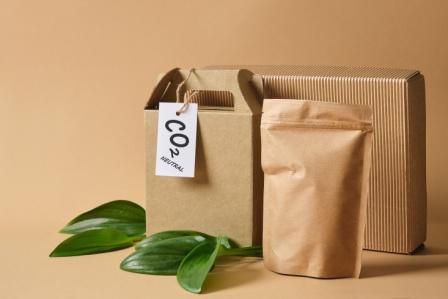Safe and sustainable food packaging is one of the best solutions to the global waste management problem. Many manufacturers switch to eco-friendly materials as part of their green initiatives. However, this transition can be slow and challenging since experts are still working on new and practical innovations.
Shifting to eco-friendly packaging is a big step toward sustainability and reducing the impact of climate change. While using organic materials is possible through years of research, making them food-safe is extra challenging. To know more about safe and sustainable food packaging, here’s a comprehensive guide.

What To Look For
When searching for safe and sustainable food packaging, there are vital features to look for. Since food products are more vulnerable to contamination, opting for quality and safety is imperative. Here are some of the qualities you must consider:
- Durability: Any product packaging should be durable. The durability makes an eco-friendly container safer despite handling from the manufacturer to the local stores. Food products prone to spillage require more rigid packaging to ensure their safety.
- Grease And Moisture Resistance: Keeping the structure of food packaging despite the grease and moisture is challenging. It’s a common problem in food delivery services. As a solution, experts have developed sustainable food packs with moisture-proof linings. Aside from safety, it can also keep the food warm and fresh for longer, perfect for deliveries.
- Insulated: Packaging is crucial to maintaining the safety and quality of food products. Since these are perishable items, extra protection against moisture and constant temperature changes is necessary. Therefore, using eco-friendly insulated packaging is a must.
- Compostable Or Recyclable: Sustainable packaging can be categorized into two types: compostable and recyclable. Compostable materials can naturally degrade for at least two years. These types of packaging are only suitable for fresh food items.
On the other hand, recyclable options are perfect for items that require additional protection for an extended period. These materials can be collected and processed to create new packaging or products for other purposes. They can be reused repeatedly without degrading the quality, making them sustainable.
These are some standard features you must look for when getting safe and sustainable food packaging. However, always consider the food you’re packaging first before getting the right options.
Costs
After considering all the crucial factors, it’s time to consider the costs. Some businesses might be hesitant to switch to sustainable packaging since it can cost more than typical plastics. Since lowering production costs is a must for every business, the additional cost can be a huge setback.
One way to minimize costs is to find a local eco-friendly packaging supplier. Doing so will lower the shipping prices. With the growing demand for safe and sustainable packaging, finding a manufacturer you can partner with should now be easier.
Popular Options
There are many safe and sustainable food packaging options to choose from. Some of these have been utilized for decades, while some are new. With a wide range of choices, you can find one that suits your needs. Here are the most popular food packaging options in the market:

- Food Takeaway Boxes: Food takeaway boxes made of cardboard have replaced the use of polystyrene packaging, which is now banned in several states. Boxes are eco-friendly and economical alternatives for making food safe for delivery.
- Wheatgrass Packaging: One of the latest innovations in sustainable packaging is wheatgrass plastic. Containers made from these organic straws are durable, reusable, and recyclable. They’re also suitable for packing liquid products like drinks and sauces.
- Glass Containers: Glass containers are some of the pioneers in reusable packaging. Glass jars and bottles are versatile and economical solutions for packing a wide range of food products. These are also convenient to recycle and repurpose at home.
- Food-Grade Stainless Steel: Stainless steel is a highly versatile and extremely tough material. Using them for food packaging is an excellent choice since they can be recycled repeatedly without degradation. The production of food-safe stainless-steel containers is also more cost-effective in the long run, with proper recycling and repurposing.
- Beeswax Wraps: Beeswax wraps are suitable for lining food takeaway boxes. These look like regular wax paper, which you can wash and reuse to wrap fruits and vegetables. After eight washes, you can tear or shred them for composting.
- Water-Soluble Films: Water-soluble films are a great alternative to non-biodegradable cling wraps. They can be utilized for packaging fruits, vegetables, and other fresh produce sold in groceries and supermarkets. These films can easily dissolve in water, so they don’t end up in landfills.
With the technology the world has today, there’ll be more eco-friendly food packaging options that will come in the future.
The Future Of Sustainable Food Packaging
The use of safe and sustainable food packaging is expected to increase in the coming years. Due to the food industry’s environmental impact, many businesses are taking the initiative to switch to eco-friendly alternatives.
Moreover, the production of sustainable food packing is growing fast. Many investors and researchers are actively focusing on developing new organic-based, compostable materials to reduce the waste problem. They’re also establishing methods to produce more with low energy consumption and carbon footprint.
Final Thoughts
The switch to safe and sustainable food packaging is a conscious effort to tackle environmental problems while enhancing the quality of products for your consumers. Despite the challenging transition, its benefits will be worth it in the long run for your business and the planet.